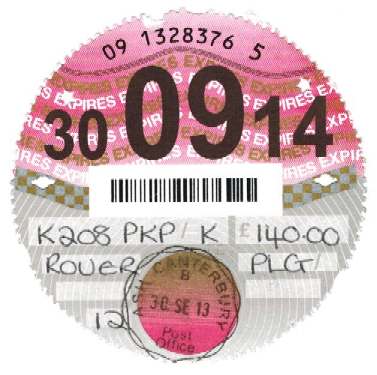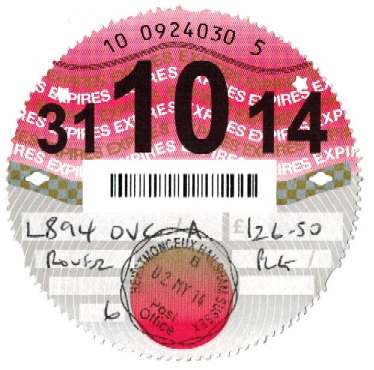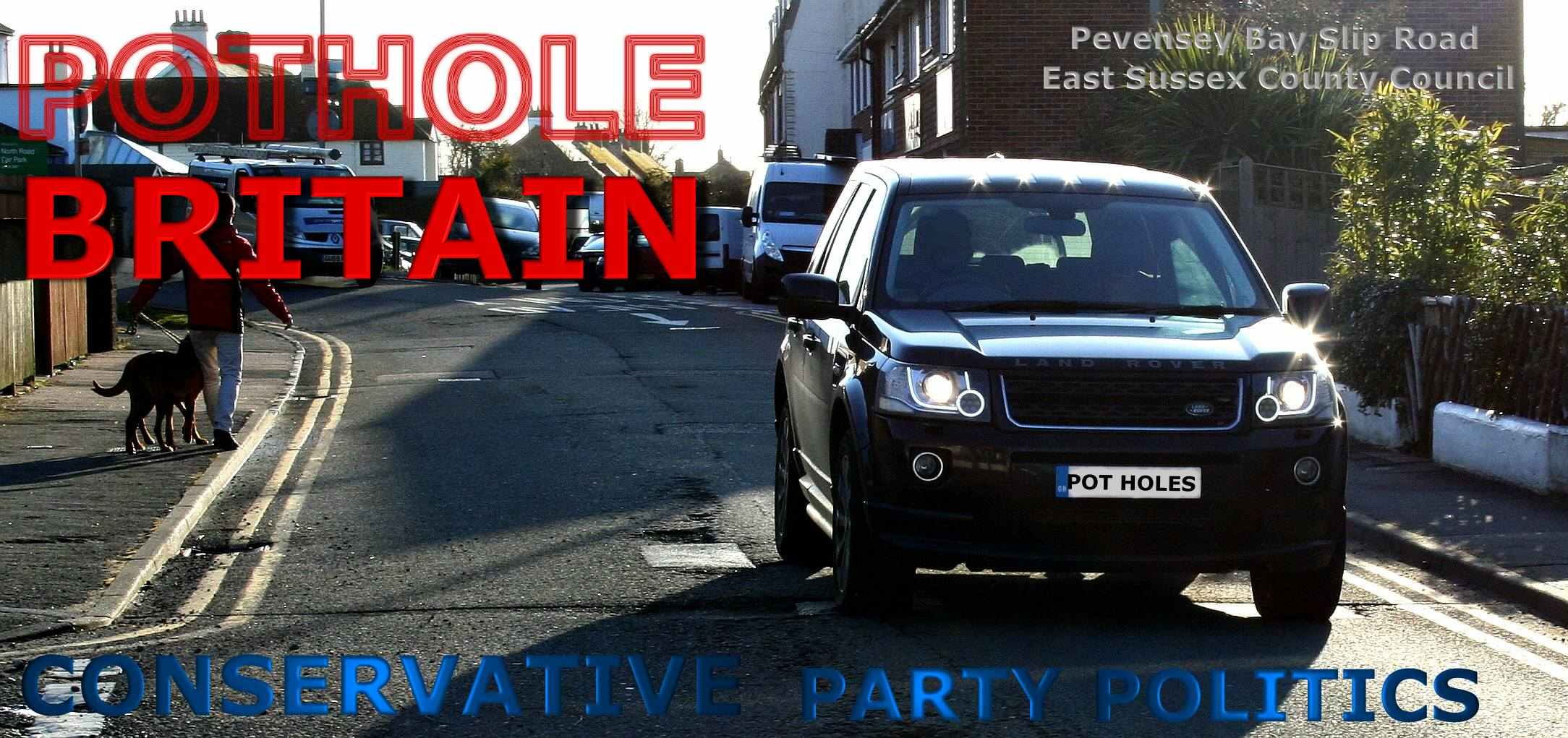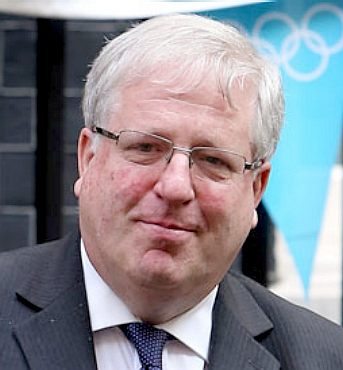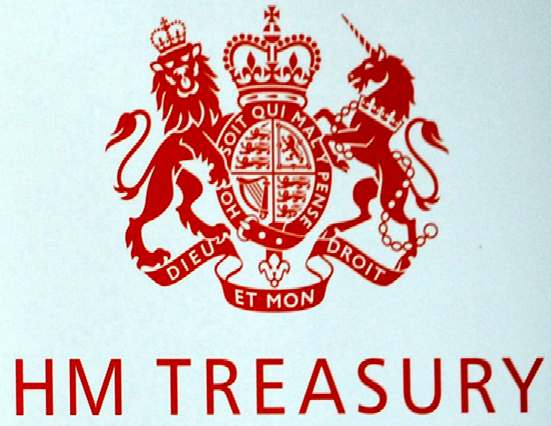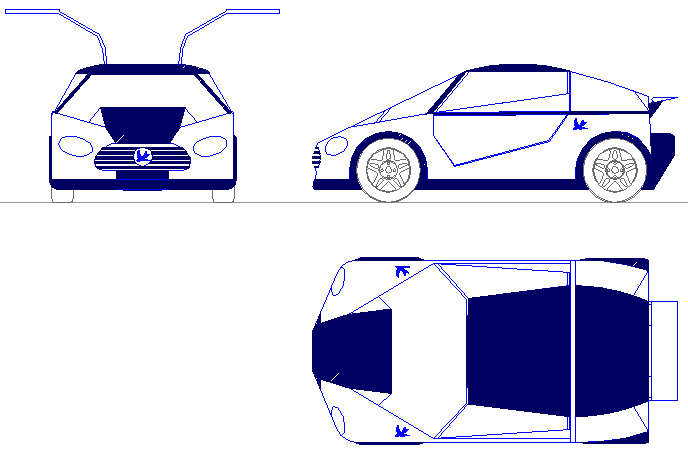|
ROAD FUND - RIP OFF TAXATION
|
|||||||||||||||||||||||||||||||||||||||||||||||||||||||||||||||||||||||||||||||||||||||||
|
A tax that provides a service for one person at one rate, and another at a preferential rate is discriminatory in principle. For example, if you are paying for a road that only one person uses, and it is not yourself, you might ask why you should be asked to contribute to its upkeep?
The same principle applies where parcel delivery vans use the road a lot, but only pay the same duty as a large car owner who only uses the road once a week.
The poor are paying to keep the rich, rich. Or, looking at it another way, those who don't use the roads very much and probably cannot afford unfair living costs, are being asked to pay the same as those who use the roads constantly and profit from that use.
PEPPER ALLEY - You'd have a job to avoid any pedestrian who had tripped over one of these potholes, especially where this is a two lane road during the rush hour traffic. But what happens if your suspension collapses and causes your car to slew into the other lane or even mount the pavement.
Patrick Allen McLoughlin (born 30 November 1957) is a British politician and Member of Parliament (MP) since 1986, initially for West Derbyshire and since 2010 for its successor, the Derbyshire Dales constituency. On 4 September 2012 he was appointed Secretary of State for Transport. A former miner, he is one of the few
Conservative MPs to have been a manual worker before entering Parliament.
HISTORY OF OUR ROAD TAX
Following the 1888 budget, two new vehicle duties were introduced
- the locomotive duty and the trade cart duty (a general wheel-tax also announced in the same budget was abandoned). The locomotive duty was levied at £5 (£485.97 as of
2014), for each locomotive used on the public roads and the trade cart duty was introduced for all trade vehicles (including those which were mechanically powered) not subject to the existing carriage duty, with the exception of those used in agriculture and those weighing less than 10 cwt-imperial, at the rate of 5s. (£0.25) per wheel.
Of course Winston was one of the privileged class, thus it would not cross his mind for a moment that transport might no longer be a luxury item, but an essential part of modern living. This demonstrates what most politicians are guilty of; a lack of vision for the future.
Hypothecation came to an end in 1937 under the 1936 Finance Act, and the proceeds of the vehicle road taxes were paid directly into the Exchequer. The Road Fund itself, then funded by government grants, wasn't abolished until 1955.
So how about it Patrick. Any chance of reviewing the regulations in terms of affordability? We doubt it. It would be political suicide to support an idea that deprives the treasury of income and works for the common man!
VEHICLE EXCISE DUTY
Vehicle Excise Duty (VED) (also known as vehicle tax, car tax and road tax), is a tax that is levied as an excise duty and which must be paid for most types of vehicle which are to be used (or parked) on the public roads in the
United
Kingdom. Vehicles used on public roads should display a current vehicle licence (tax disc) as proof of payment which will not be issued without prior proof that the vehicle has a valid MOT and valid insurance (unless the vehicle is less than three years old, in which case an MOT certificate is not required). A Statutory Off Road Notification (SORN) must be made for a registered vehicle that is not being used on the road, and which has been taxed since 31 January 1998. VED, which is collected and enforced by the Driver and Vehicle Licensing Agency (DVLA), raised GB£5.63 billion in 2009.
CURRENT REGULATIONS
Most motor vehicles used or kept on the public road are required to display a non-transferable vehicle licence ("tax disc"). The licence is issued upon payment of the appropriate VED amount (which may be zero). Owners of registered vehicles which have been licensed since 31 January 1998 and who do not now wish to use or store a vehicle on the highway are not required to pay VED, but are required to submit an annual Statutory Off-Road Notification
(SORN). Failure to submit a SORN is punishable in the same manner as failure to pay duty and display a tax disc when using the vehicle on public roads.
RATES
Charges as applicable from 1 April 2013. For cars registered before 1 March 2001 the excise duty is based on engine size (£140 for vehicles with a capacity of less than 1549cc, £225 for vehicles with larger engines). For vehicles registered on or after 1 March 2001 charges are based on theoretical CO2 emission rates per kilometre.
The price structure was revised from 1 April 2013 to add an extra charge for the first year (the standard cost was not changed, and remains the same as for 2001 onwards). The 'first year rate' only applies in the year the vehicle was first registered and is said by the government to be designed to send "a stronger signal to the buyer about the environmental implications of their car purchase". Charges as applicable from 1 April 2013 are:
HEAVY GOODS VEHICLES
Taxation for use of Heavy goods vehicles (Large goods vehicles) on UK roads are based on the size, weight per axle. For full details refer to the source reference:
EXEMPT VEHICLES
Various classes and uses of vehicle are provided with a tax disc without charge. These include: electrically propelled vehicles, vehicles older than 40 years (see below), trams, vehicles which cannot convey people, police vehicles, fire engines, ambulances and health service vehicles, mine rescue vehicles, lifeboat vehicles, certain road construction and maintenance vehicles, vehicles for disabled people, certain agricultural and land maintenance vehicles, road gritters and snow ploughs, vehicles undergoing statutory tests, vehicles imported by members of foreign armed forces, and crown vehicles.
It should be noted that although police vehicles are in fact crown vehicles and therefore exempt from the requirement for a tax disc, they generally display them regardless to suppress complaints from members of the public who might be stopped for failure to display a valid tax disc on their own vehicle, and thus make accusations of double-standards - and on that we agree entirely.
Each year on 1 April, vehicles constructed more than 40 years before the start of that year become eligible for a free vehicle licence under "historic vehicle" legislation. This is due to the age of the vehicle and a presumption of limited mileage. Initially this was a rolling exemption applied to any vehicles over 25 years old, however in 1997 the cutoff date was frozen at 1 January 1973. The change to "pre-1973" was unpopular in the classic motoring community, and a number of classic car clubs campaigned for a change back to the previous system. In 2006 there were 307,407 vehicles in this category:
As of 1 April 2014, vehicles manufactured before 1 January 1974 became exempt from the VED (Finance Bill 2014, as set out in the 2013 Budget, 20 March 2013). In the 2014 Budget, the government introduced a 40-year rolling exemption, with vehicles built before 1 January 1975 becoming exempt on 1 April 2015 and so on
LINKS
Sorn-statutory-off-road-notification UK Government DVLA driver and vehicle licensing agency Money Matters to me TAX Road Fund Licence The AA motoring_advice car buyers guide to road tax UK Government vehicle registration certificate V5C log book UK government Patrick Mcloughlin Road Transport Research Laboratory https://www.gov.uk/government/people/patrick-mcloughlin http://en.wikipedia.org/wiki/Patrick_McLoughlin https://www.gov.uk/government/ministers/secretary-of-state-for-transport https://www.gov.uk/vehicle-registration-certificate-v5c-log-book http://en.wikipedia.org/wiki/Vehicle_excise_duty http://en.wikipedia.org/wiki/Road_Fund https://www.gov.uk/sorn-statutory-off-road-notification https://www.gov.uk/make-a-sorn https://www.gov.uk/government/organisations/driver-and-vehicle-licensing-agency http://www.moneymatterstome.co.uk/3-Where-money-goes/Sub1/TAX-RoadFundLicence.htm http://www.parkers.co.uk/cars/advice/road-tax-guide/ http://www.theaa.com/motoring_advice/car-buyers-guide/cbg_roadtax.html
The blue bird legend continues: Team Speedace plan to run the Ecostar DC50 above from John O'Groats in Scotland to Lands End in Cornwall in an attempt to beat the current record set in a Tesla in 2013. This is a zero emission vehicle that is very affordable - and with solar panels fitted for assistance, may cost nothing to run for those who do not do many motoring miles a week. Contact Chris or Terry for details.
The Bluebird World Cup Trophy challenge
|
|||||||||||||||||||||||||||||||||||||||||||||||||||||||||||||||||||||||||||||||||||||||||
|
MOBILE PHONES | RACING TRACKS | SOLAR CAR DIRECTORY | SOLAR RACING EVENTS |
|||||||||||||||||||||||||||||||||||||||||||||||||||||||||||||||||||||||||||||||||||||||||
|
This
website is copyright © 1991- 2018 Max Energy
Ltd. All rights
reserved. The bird logo
|
